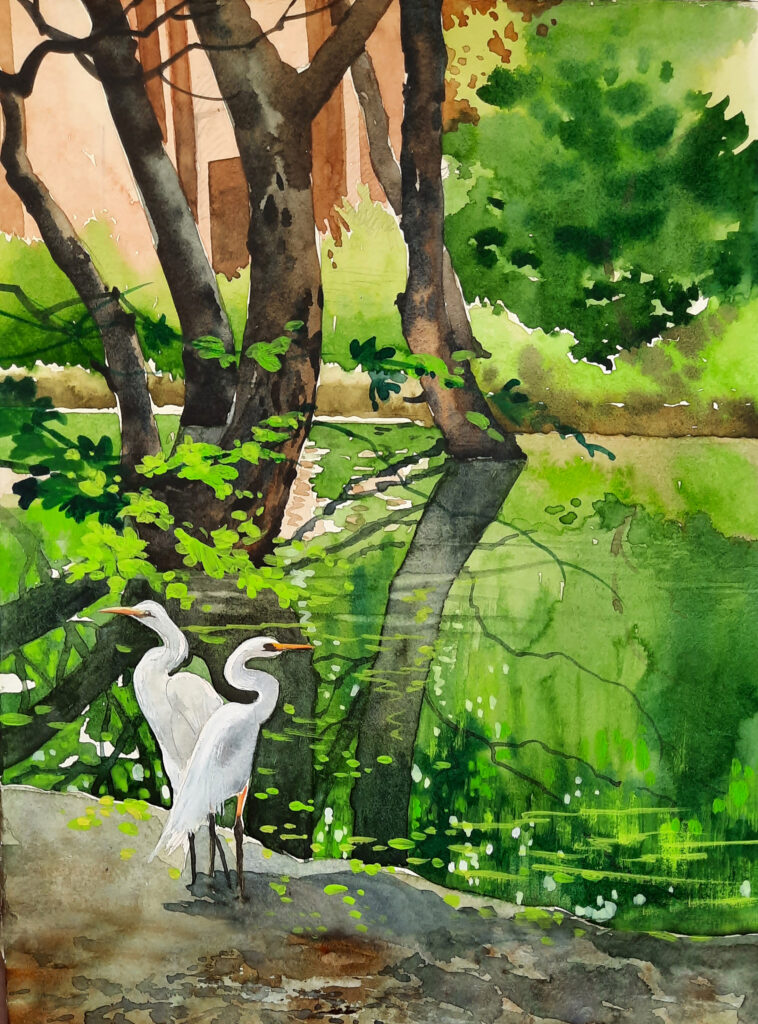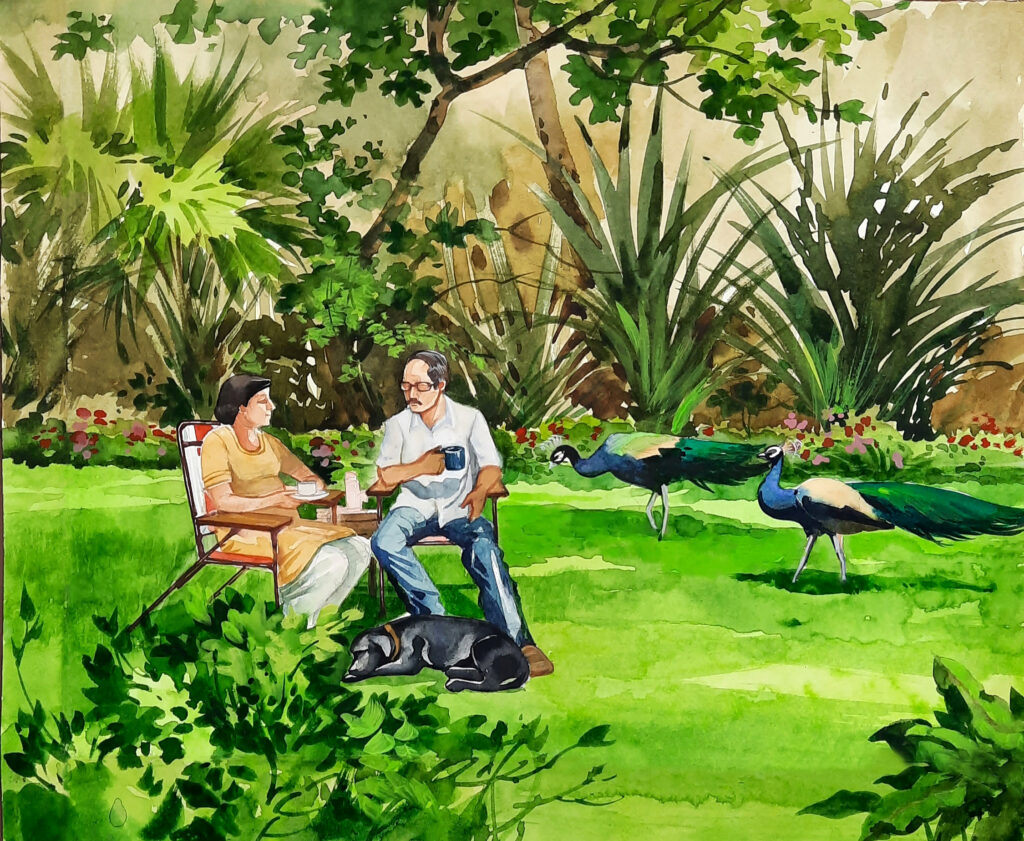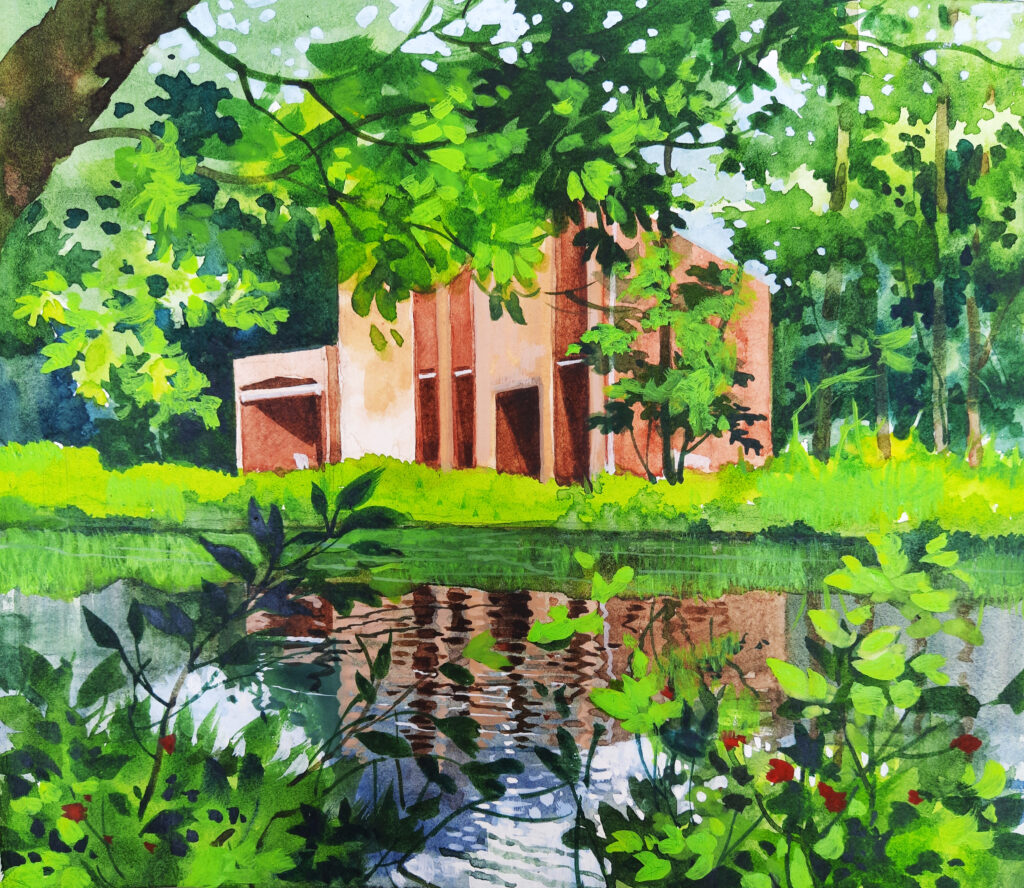Our house was at the end of a row of five of the campus’s largest houses, which were allotted to faculty members based on seniority. The house was built on a large plot of approximately 15,000 square feet. While the front lawn was relatively small, the side and back lawns were quite large. Being the last unit in the row of houses, it provided us with much greater privacy than the other residences. Beyond the back lawn, separated by a narrow brick path and adjacent to the hedge edging the lawn, was a pond that was euphemistically referred to as ‘Lake Superior.’ The trapezoid-shaped pond was about 25,000 square feet in area, and no deeper than around five feet at its deepest point in the middle. The pond collected flood waters from across the campus during the rainy season through surface run off, as it was at the lowest point on campus. It also served as a sump, and the water used for watering lawns and plants flowed into the pond via sub-soil channels.

Because groundwater was the campus’s primary source of water, the pond was vital for recharging the groundwater. During the rainy season, the pond filled up to the brim, and water occasionally overflowed into our backyard, which was a couple of feet higher than the pond’s edge. I began keeping note of how many days the pond was filled up in the rainy season. I empirically observed that if the pond was full for 35 days or more during the monsoon season, the groundwater would be properly recharged to meet the campus’s needs until the following monsoon – that is, there would be no groundwater depletion to meet the campus’s needs until the next monsoon season. Otherwise, the water would be required to be pumped up from a greater depth during the summer, and the pumps had to run for longer periods of time to fill the overhead tank that supplied water to the campus.
Except during the rainy season, when it filled up with rainfall, the pond was dry all year. A dense forest of over 200 bushes and trees, including some of the tallest and oldest on campus, flourished in the pond and the surrounding areas. Even in the summer months, sunlight did not reach the pond’s bed. We could only see the foliage of the trees that grew in the pond when we looked out the large backdoor of our living room beyond the hedge that bordered the back garden. We could hear the chirping of birds that nested in the forest all year. Their chirping would reach a crescendo immediately before daybreak and at dusk. Summer was also the season when the peacocks roamed freely, unconcerned about our presence, and lent a riot of color to our view. The little forest was our private forest. It provided us with wonderful serenity and beauty. We would frequently sit on the back lawn in the quiet seclusion with Tito, soaking in the glory of nature. He’d lie down on the grass and lazily stretch his limbs, as if spellbound by nature’s grandeur.


